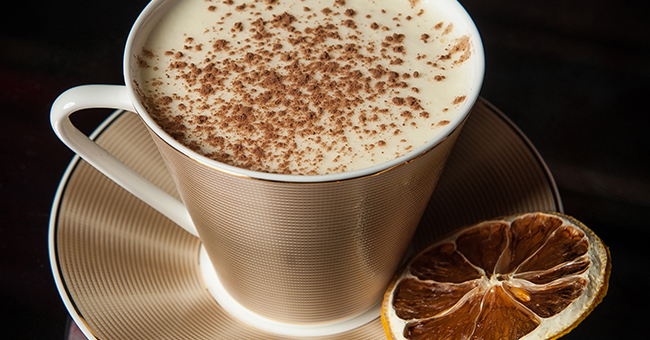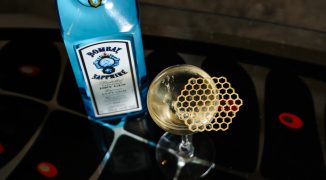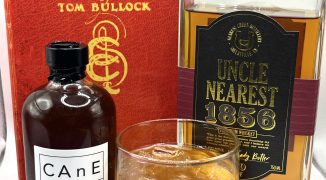Chocolate is so many of our guilty pleasures, but when mixed in cocktails, it can fall prey to artificial flavoring, cloying sweetness and a lack of sophistication that make the result nearly undrinkable.
While the phrase “chocolate cocktail” invokes memories of bad martinis best left in the 90s, these tips, tricks and recipes from industry professionals give chocolate the sophisticated, modern treatment it deserves. “The first question people ask me when they see drinks with chocolate on our menu is ‘is it sweet?’” says Ben Yabrow, bartender at Atlanta’s Himitsu. He advises against using white or milk chocolate and instead favors cacao nibs and bitter chocolate. “With the right dark chocolate, whether from your local farmers market or small batch provider, can get you that sweet flavor without the added sugar. Piggyback off the sugar in other ingredients, and you’ll create a drink that’s balanced and not cloying.”
Avery Glasser, founder of Bittermens, which makes handcrafted cocktail bitters and culinary extracts, including the popular Xocolatl Mole Bitters, agrees. “Cacao, by its nature, is actually not sweet. Pure chocolate is aromatic, earthy and slightly bitter, and can add an extreme amount of depth and complexity to a cocktail.”
Nick Farrell, spirits manager of Washington, D.C.’s Iron Gate, recommends experimenting with cacao shells or cacao nibs instead in addition to pure chocolate. “Cacao shells give off an incredible cocoa nose when infused in spirits. Steeping for 4-12 hours can add great complimentary flavors to most barrel-aged base spirits. Incorporating salt can add balance, while amari can add depth and counteract the sweetness of some of the sweeter cacao-based classic cocktails.”
Estanislado Orona, bar manager of Portland’s Raven & Rose, agrees that sourcing is crucial to toning down the sweetness in chocolate cocktails. “Like many cocktails that came out of the 90s, the chocolate martini concept was good, but the execution is typically horrible and overly sweet, which boils down to the quality of ingredients being used,” he explains.
“When you source quality cacao and don’t use a lot of added cover flavors like vanilla or sugar, it really brings out qualities and notes beyond just the chocolate,” says Abby Bryant of Atlanta’s Xocolatl Small Batch Chocolate. The company recently worked with a local distributor, Old Fourth Distillery, on a chocolate-infused vodka, and many bars across the country are doing similar infusions in-house.
Orona and his team at Raven and Rose recently developed a house-made Cacao Liqueur using single origin Ecuadorian beans, Hi-Test vodka, El Dorado 8-year Demerara Rum, and a touch of orange oil.
Farrell steeps his cacao shells in a bottle of bourbon for 12-24 hours at room temperature, and bar manager Greg Stone makes a similar bourbon, cacao-nib infusion at San Francisco’s Jardinière.
For those wanting to try their hand at home infusion, Old Fourth Distillery’s Jessica Lee Luna recommends seeking out your local chocolate maker, procuring some high quality bean-to-bar nibs, and soaking them with vodka or your spirit of choice. “My background is as a pastry chef, and I love to be in the kitchen and come up with cool, delicious things. But it’s a quite simple process for the home bartender as well.”
For those who prefer to leave the tinctures to the pros, there are a wealth of high quality cacao infused bitters, extracts, and spirits on the market, including the aforementioned Bittermens Xocolatl Mole Bitters as well as salted cacao bitters and barrel-aged flowers & cacao bitters from Workhorse Rye.
Beverage consultant Lara Creasy also recommends Tempus Fugut Spirits’s cordial line, Merlet Spirits, and Marie Brizard et Roger International for pure cacao infusions. Creasy says “it makes a huge difference to find a creme de cacao or spirit of a high caliber” when experimenting with drinks, whether at home or behind the professional bar.
High quality cacao mixes well with most spirits, though Farrell enjoys “using cacao to complement malty, toasty, and smoky-based spirits. This obviously means whisky, but genever works surprisingly well, as do dark rums with their caramel notes, and tequilas and mezcals, with their smoke and spicy notes. In terms of what spirits to avoid, though some might work, I would generally avoid using gin with chocolate in cocktails. Cacao is a strong flavor that can overwhelm the delicate notes of many gins.”
Bottom line? It’s all about personal taste, quality ingredients and in all things, balance.





